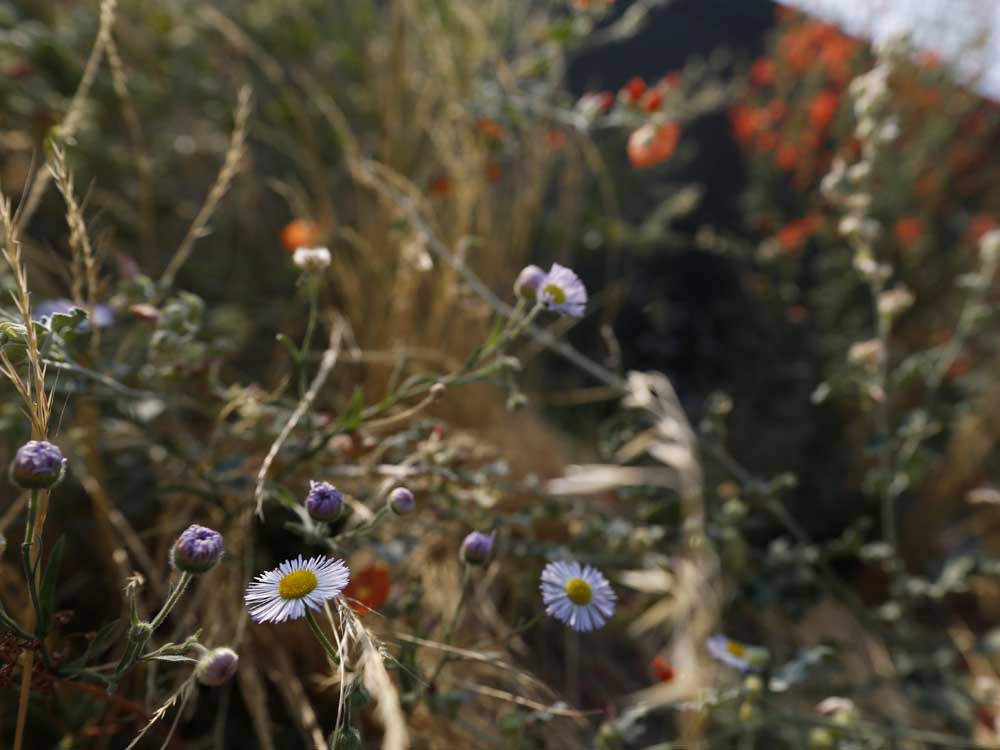Bend building’s “secret” garden hides in plain sight
Published 12:00 am Tuesday, August 25, 2015

- Joe Kline / The Bulletin Wildflowers bloom in the Moda building’s rooftop garden, which is believed to be the first to use 100 percent native vegetation. It was installed in 2008.
Overlooking the Old Mill lies a garden hidden almost in plain sight.
It’s perched on the second-story roof of the Leadership in Energy & Environmental Design-certified building that houses Moda Health and Western Title & Escrow, on the corner of SW Bond Street and SE Wilson Avenue in Bend.
The garden features plants native to Central Oregon’s High Desert, with Broken Top and South Sister providing a dramatic backdrop. The garden is considered green because it’s maintained without pesticides or herbicides or fertilizers and the soil is organic.
WinterCreek Restoration and Nursery designed and installed the garden in 2008.
There are other rooftop gardens, but this one is different because it’s the first that’s “100 percent native,” said Karen Theodore, WinterCreek’s co-owner. All the plants came from WinterCreek’s nursery.
The idea for the green rooftop garden came from the CEO of insurance company Moda Health. With his desires in mind, the WinterCreek team created what turned out to be the first rooftop garden using completely native vegetation.
Being the first made this garden design a particularly challenging project, said Rick Martinson, WinterCreek’s co-owner who oversees restoration and landscaping services.
“There was no model to work from,” said Martinson, who searched the country for examples. “It took a lot of research.”
Martinson said another challenge was the implementation of it. People had no idea about what the garden’s designers were doing, so they really didn’t know how to help. And some folks weren’t confident WinterCreek’s plan would work.
Now, the green rooftop garden is “used as a model across the country in dry climates,” said Martinson, who has given talks on it in Las Vegas; Seattle; Boise, Idaho; and Reno, Nevada. He’s also had discussion with people in Georgia and Florida.
While interest is high, “I don’t know if anyone has done it,” he said.
Earlier this year, Millsite Landscape Services was hired to maintain all the building grounds, including the garden.
“Native plants are great — they are well-adapted to the soils and climate we have here; they attract pollinators and create a habitat and nesting site for birds; and they are more drought-tolerant,” said Nate O’Meara, landscape maintenance manager and designer for Millsite. “It can be a sticky thing, though. Aspen trees are native, but they need lots of water. You have to know where the plants grow naturally and apply them in the right part of your garden or landscape.”
WinterCreek planted more than 40 different plant species native to Central Oregon in a pumice mix soil suitable for rooftop planting. The plants selected are drought-tolerant and able to live in a shallow soil profile with full sun, O’Meara said.
Raised concrete beds house bunches of native wildflowers, including Davidson’s penstemon, globemallow, scarlet gilia, yarrow, creeping phlox and lupines, which grow among native bunch grasses and shrubs like rabbitbrush, sage, manzanita and mountain mahogany. There’s even a few small murrayana pine trees. Circular, gravel-filled areas are raked in the style of a Japanese Zen garden.
An underground soaker hose system draws water from the Deschutes River, a feature O’Meara said is healthier for the plants and more sustainable. Millsite uses naturalistic pruning methods that reduce bulk without looking pruned. The weeding is done by hand.
“If a similar type of garden was planted in a home, it would be low maintenance,” O’Meara said. “It needs less work than regular landscaping. It’s so natural in look and feel, and it doesn’t have to be as clean and tidy.”
The garden suffered a major setback earlier this summer when the water pump that brings river water to the roof clogged — just in time for a heat wave. The garden went without water for a couple of weeks before Millsite and building management figured out what was going on and started hand-watering.
Some plants responded to water and rebounded quickly. Others have taken longer to come back. Millsite landscapers pruned dried-out plants back to green and pulled what they knew was dead. Slowly but surely, the garden is recovering.
“The garden is a nice example of using native plants,” O’Meara said. “It’s showing the future, especially with water constraints. You can still have attractive landscapes with birds and butterflies, coexisting with an office building full of doctors and lawyers.”
— Reporter: jasminenicole1@gmail.com






